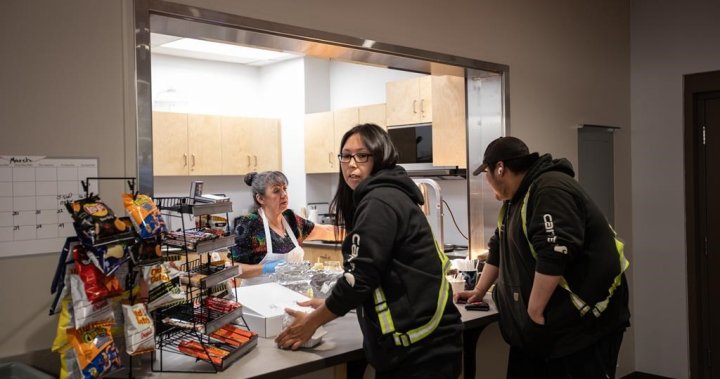Some Indigenous communities in northern Alberta are hopeful that the Trans Mountain pipeline expansion will mark the start of a new chapter in their relationship with Canada’s oilsands industry. The pipeline project promises improved access to export markets for oilsands producers, and its expected opening on May 1 is significant for the Fort McKay First Nation. Chief Raymond Powder sees the pipeline as an opportunity to leverage growth and transfer opportunities to Fort McKay as the industry expands in the region. Located in the heart of the Athabasca oilsands, Fort McKay is surrounded by industrial development and benefits from revenue generated from impact benefit agreements with oilsands developers.
The complicated relationship that the oilsands industry has with Indigenous people in Fort McKay is evident, with both positive and negative impacts. While the community has benefitted economically from industry partnerships and owns several businesses serving the oil and gas sector, there are concerns about the safety and environmental impact of the massive oilsands wastewater tailings ponds in the area. Powder acknowledges the historic challenges the community faced with the arrival of industry, but also highlights the growth in programs, services, and infrastructure that have resulted from these partnerships. Not all First Nations view their industrial neighbors positively, with some, like the Athabasca Chipewyan First Nation, seeing negative impacts on their communities.
Eriel Deranger, an advocate for Indigenous communities and executive director of Indigenous Climate Action, describes the relationship between Indigenous communities and the oilsands industry as an “economic hostage situation.” Many communities face the negative impacts of oilsands development but often do not speak up due to the lack of other economic opportunities. Deranger emphasizes the importance of not equating Indigenous involvement in oil and gas projects with approval, citing the need to address the environmental consequences of industry operations. Justin Bourque, an Indigenous leader, highlights the historical challenges faced by Indigenous communities due to oilsands development but sees growing opportunities for Indigenous participation in the industry through equity ownership models.
As the industry evolves and reconciliation efforts continue, Indigenous communities are exploring new opportunities for economic development in the oil and gas sector. Bourque sees the trend towards equity ownership as a positive step that allows communities to benefit from long-term, predictable revenue sources. The recent announcement of $5 billion in loan guarantees from the federal government to support Indigenous ownership stakes in natural resource projects is seen as a positive catalyst for Indigenous communities to become more active in the industry. The Fort McKay First Nation’s memorandum of understanding with Suncor Energy Inc. on an oilsands lease development opportunity on reserve lands signifies a new path for economic development on Indigenous lands and secures the community’s long-term future.
Powder views the agreement with Suncor as a significant accomplishment that will allow Fort McKay to grow alongside the oilsands industry in the years to come. The deal signifies a new era of economic development on Indigenous lands and will ensure that there are no limits to opportunities for Fort McKay as the industry expands. Despite the challenges and complexities of the relationship between Indigenous communities and the oilsands industry, there is optimism for a more collaborative and mutually beneficial future for all parties involved.


